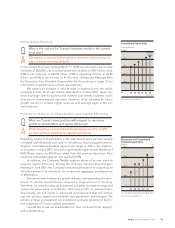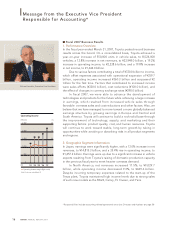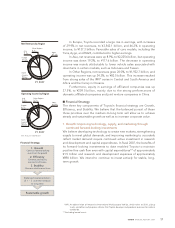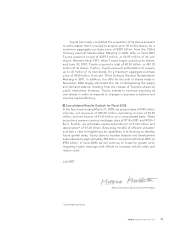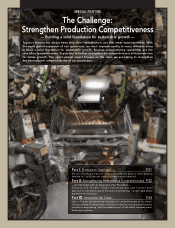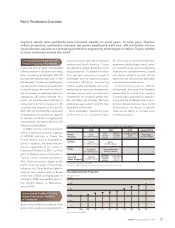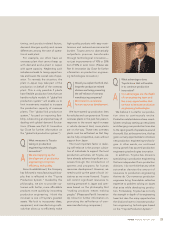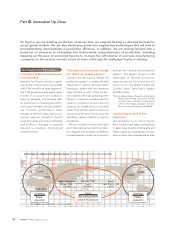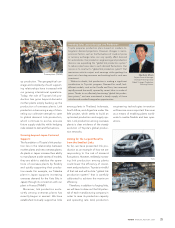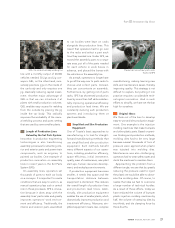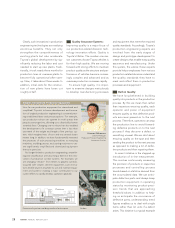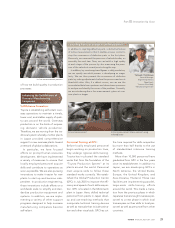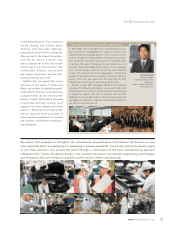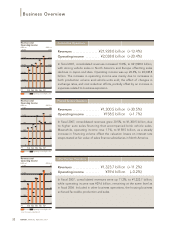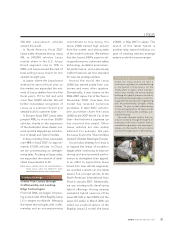Toyota 2007 Annual Report Download - page 27
Download and view the complete annual report
Please find page 27 of the 2007 Toyota annual report below. You can navigate through the pages in the report by either clicking on the pages listed below, or by using the keyword search tool below to find specific information within the annual report.
ANNUAL REPORT 2007 25
up production. The geographical cov-
erage and complexity of such support-
ing relationships have increased with
our growing international operations.
Today, the role of Toyota’s link pro-
duction has gone beyond domestic
mother plants simply backing up the
production of overseas plants. Link
production is becoming a way of chan-
neling our collective strength to cater
to global demand. Link production,
which continues to evolve, ensures
future supply stability while hedging
risks related to demand fluctuations.
Growing beyond Japan-Centered
Support:
The foundation of Toyota’s link produc-
tion lies in the relationship between
mother plants and new overseas plants.
As plants in Japan increase their ability
to manufacture a wide variety of models,
they are able to stabilize the opera-
tions of overseas plants by flexibly
and quickly supporting their produc-
tion needs. For example, our Takaoka
plant in Japan supports increasing
overseas demand for the Yaris (Vitz in
Japan) through its connection with our
plant in France (TMMF).
Moreover, link production exclu-
sively among overseas plants has
recently begun in earnest. We have
established mutually supportive links
among plants in Thailand, Indonesia,
South Africa, and Argentina under the
IMV project, which seeks to build an
optimized production and supply sys-
tem. Link production among overseas
plants is clear evidence of the steady
evolution of Toyota’s global produc-
tion networks.
Aiming for the Largest Benefits
from the Smallest Links:
So far, we have presented link pro-
duction as an example of how we are
responding to the risk of demand
fluctuations. However, recklessly increas-
ing link production among plants
could lower the efficiency of invest-
ment and production. Toyota is mindful
of that risk and will build a “global link
production system” that is carefully
calibrated to achieve the maximum
efficiency.
Therefore, in addition to forging links,
we will have to draw out the full poten-
tial of each manufacturing company in
order to raise its production capacity
and operating rate. And, production
engineering technologies innovation
will become more important than ever
as a means of enabling plants world-
wide to realize flexible and lean oper-
ations.
Avoiding Sales Losses through Link Production
Toyota prepares production plans based on medium-to-
long-term demand projections. However, changes in macro-
economic factors, such as the fluctuations of crude oil prices
or currency exchange rates, can very quickly affect demand
for automobiles. Our production engineering and production
divisions are expanding the “global link production system”
to reduce sales losses due to such demand fluctuations. Our
mission is to construct a “global link production system” that
maximizes vehicle output and earnings while getting the
most out of existing resources and working hard to curb new
investment.
Without a doubt, link production is making a significant
contribution to Toyota’s progress. Demand for small, fuel-
efficient models, such as the Corolla and Yaris, has increased
rapidly around the world, spurred by recent hikes in crude oil
prices. Thanks to an effectively functioning “global link produc-
tion system,” we have maintained a timely supply of these
vehicles and avoided losing sales opportunities.
Norifumi Miura
Project General Manager
Strategic Planning Group
Global Strategic Production
Planning Division
France plant (TMMF)
Yaris
Production line of Hilux VIGO, IMV series


